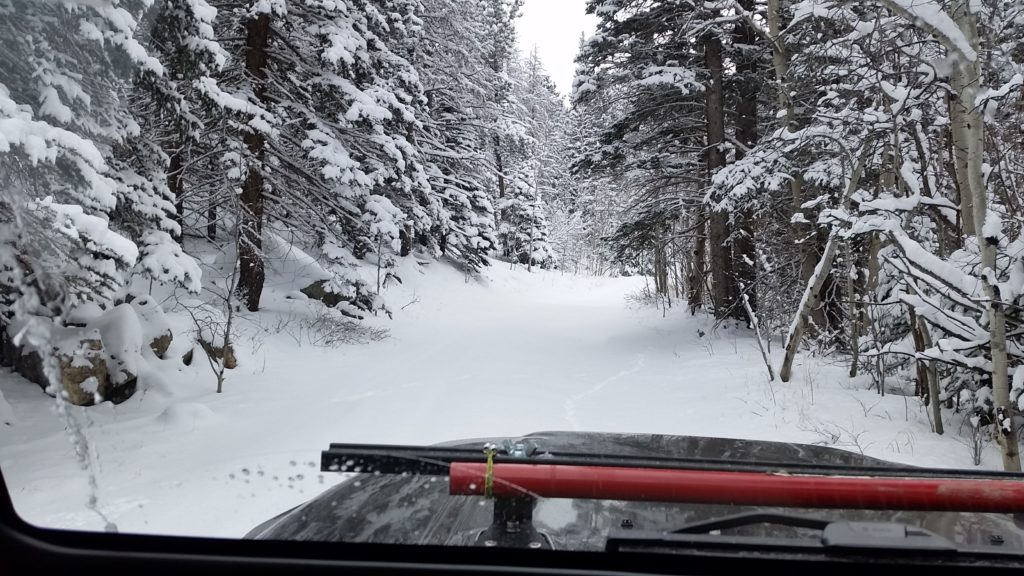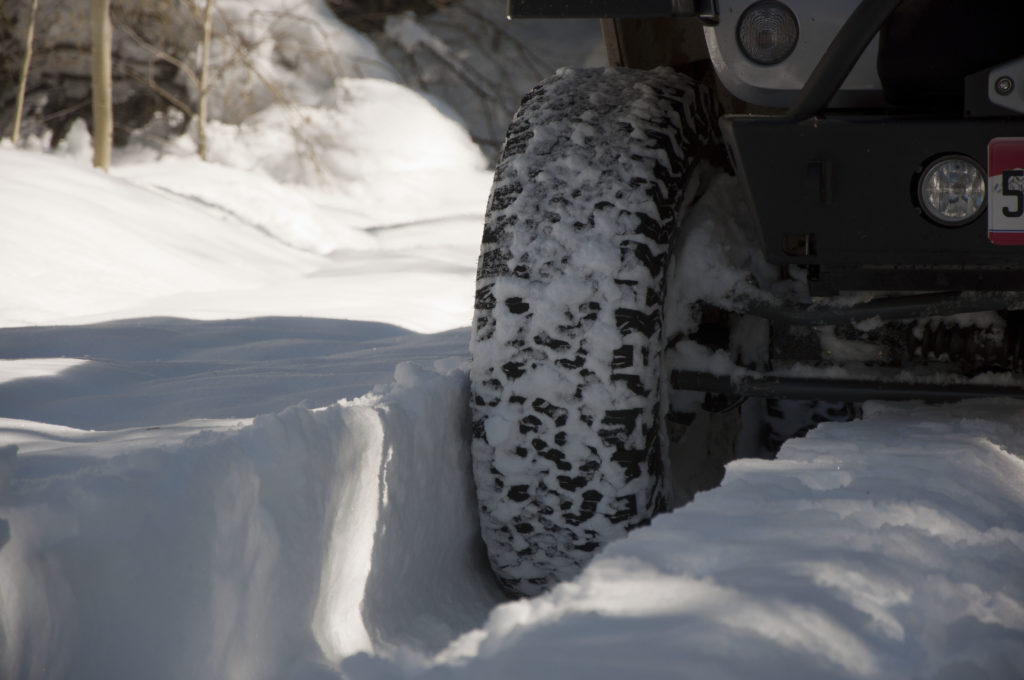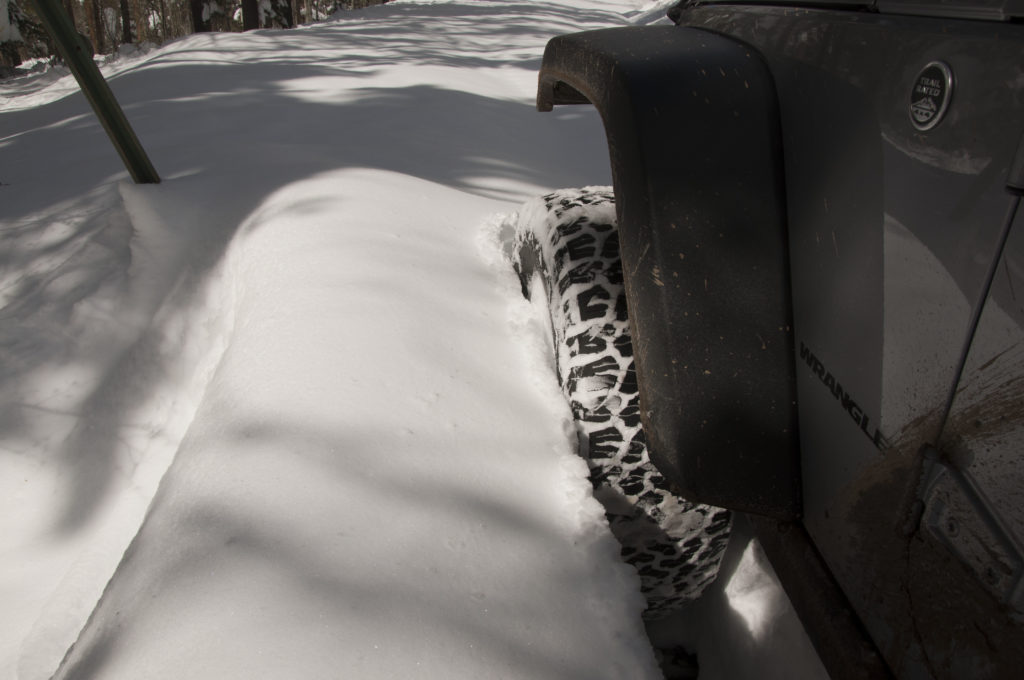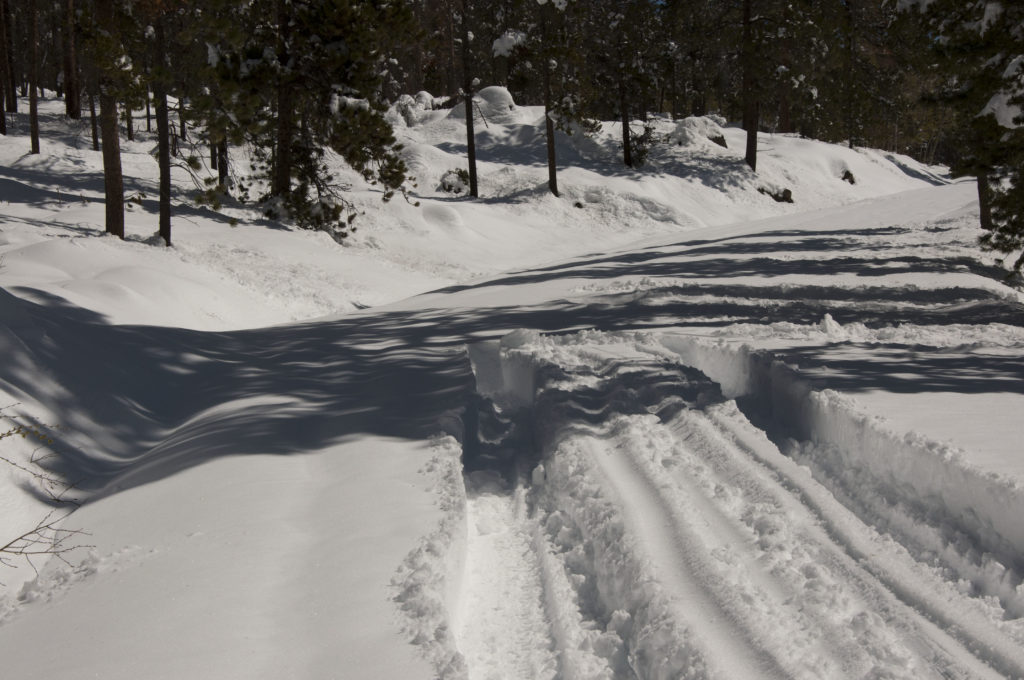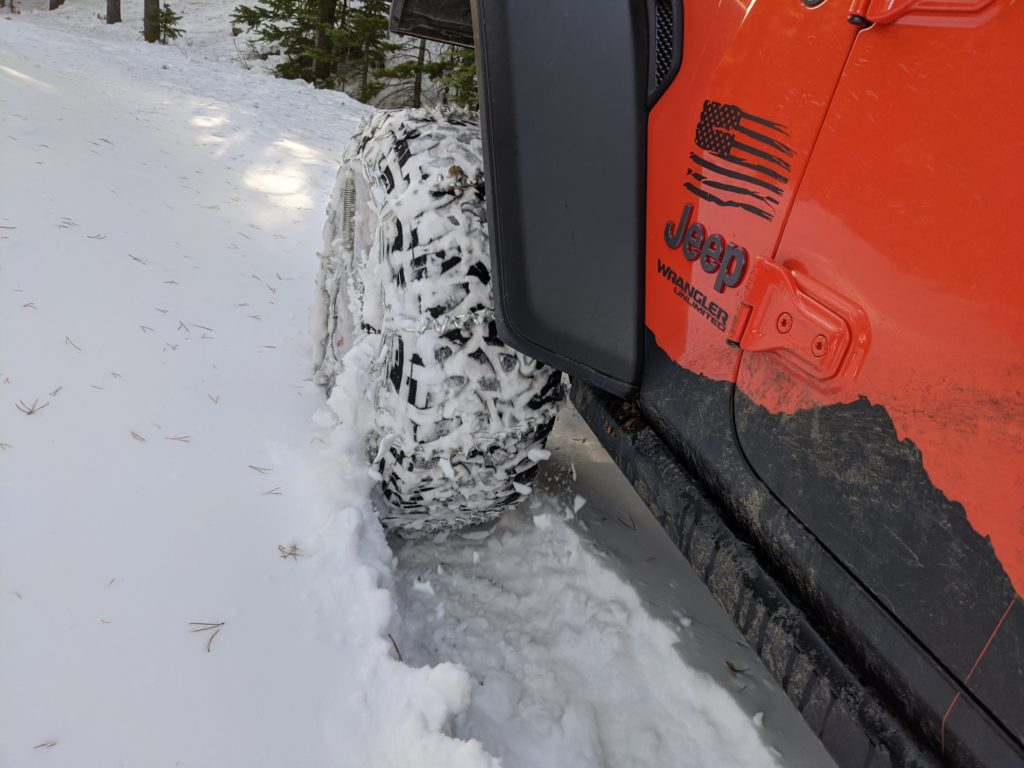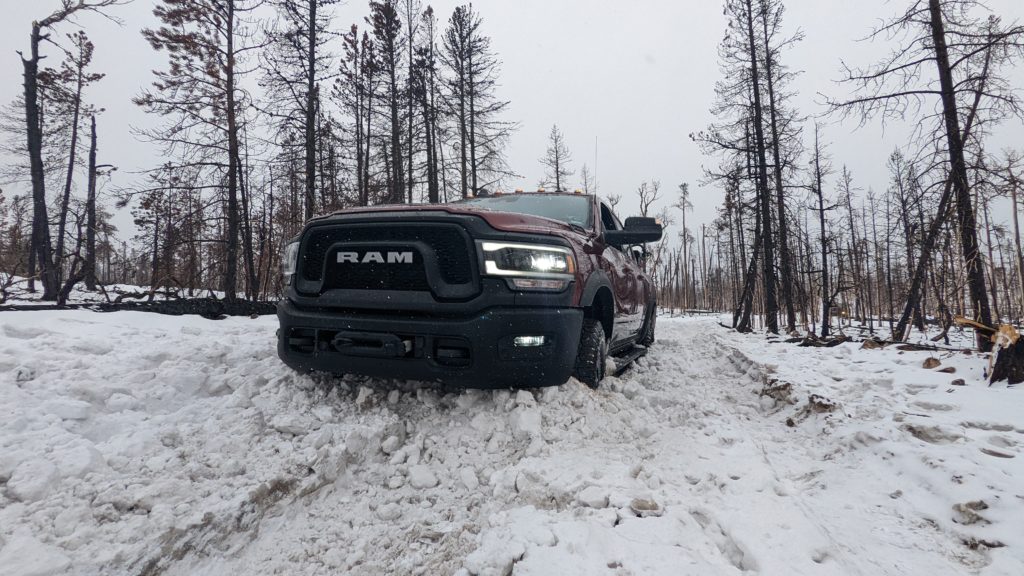October 28, 2022 | Categories: News
Let’s talk about snow wheeling!
It’s time to talk about snow a bit more!
We are entering the swing season where snow has fallen, but all the high elevation trails are still accessible because it’s just not quite deep enough to close you out. This provides amazing scenery, amazing photos, but can also catch you off guard if not prepared.
Most vehicles can travel in snow up to the center of the hubs, or center of the axle tubes. Reason being is the snow isn’t putting any restrictive/friction forces on the underside of the vehicle. Like the tire pressure post yesterday, you can float on top of it (within reason) if you play with your tire pressures enough to balloon out your tires and increase that contact patch. Lower PSI gives much large contact patch with the ground.
Once you get into snow above the axle height, it’s still possible to traverse across it if all the conditions are right. If you’ve ever watched Pacific NW offroading videos, you’ll see them driving in on 5-6 feet of heavy wet snow that can support the weight of the vehicle. (Bud Nixon comes to mind on his videos). We rarely have that here in Colorado, it’s usually low moisture “sugar snow” with ice under it. Some of the pics here show you in May of 2016, we had a super heavy wet 40 inches of snow fall in Northern Colorado, and you could drive on top of it. But the others show you a snow layer with solid ice under it, requiring tire chains to even move.
If you do get into snow higher than your axles, you need to understand that at some point, it will beach you and you’ll just sit there and spin, even if you have tire chains. Example is the Power Wagon in the photos, it doesn’t look stuck, but it’s sitting on a very hard layer of icy snow and is “bellied out.” Totally unable to move under its own power because the tires can’t make solid contact with the ground. Once your suspension unloads, not even tire chains can propel you forward.
If you’re traveling on an icy trail with a bit of a side lean to it, you can chain up your “downhill” side front and back tire (if you don’t have 4 wheels worth of tire chains) to help you not slip off the side of the road. Tire chains are an extremely helpful tool, but you shouldn’t use them to get yourself into trouble as it makes it exponentially harder to get out of trouble!
When venturing out this time of year, please travel in a group. Inspect your recovery gear and make sure it’s in tip top condition. Equip your vehicle with a winch if it doesn’t already have one! A winch and tree strap can get you out of 90% of any issue you’ll get stuck in. And if there are no trees nearby, that’s what the spare vehicles are for. They are your “trees” to winch to.
You should always have an emergency kit in your vehicle with spare food, water, warm clothing, etc. It may be 65 and sunny here in town, but your sandals and shorts could literally have you freezing to death when you get stuck on a trail in the mountains. Hiking out through 18 inches of snow in your Chacos won’t be fun! And yes… we’ve seen it.
A huge thank you to our sponsor, The Edge Automotive. They help us out with vehicle modifications, recovery gear purchases, vehicle inspections, you name it! If you need any work done on your vehicle before winter hits, check them out at https://www.theedgeautomotive.com/
Colorado 4×4 Rescue and Recovery
We Recover the Rockies

